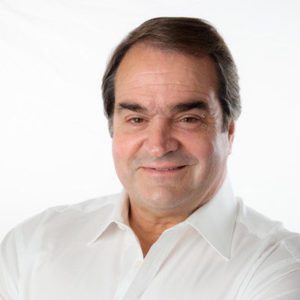 A billion-dollar healthcare technology company was looking to hire a new CEO recently, and my team and I were called in to evaluate two candidates.
A billion-dollar healthcare technology company was looking to hire a new CEO recently, and my team and I were called in to evaluate two candidates.
Both were extremely talented, but each laid out a different approach for their first few months in the potential new role. One candidate had a track record of moving people around pretty slowly, and his plans for his first 100 days included a “listening tour” where he would get to know all the various stakeholders within the ecosystem of the business. The other candidate’s philosophy stood in stark contrast: he had a fluidity, flexibility, and level of comfort with moving people around. He believed people shouldn’t be in the same role forever, and shouldn’t want to be, so he suggested he would focus on his leadership team first, making adjustments where needed to deliver on the investment thesis.
He got the job.
The difference between these two candidates highlights an important trend emerging in executive leadership.
For years, the first 100 days for a new CEO typically would prioritize the following focus areas:
1. Personal knowledge: Knowing yourself, your leadership strengths and weaknesses, and understanding how to manage them;
2. Getting to know your constituency: Meeting your stakeholders, including customers, suppliers, buyers, trade organizations, employees, etc.;
3. A determination of whether your organization’s design is fit for purpose; and (usually) last
4. Focusing on your people: Considering whether you have the right people in the right roles on your leadership team.
But the velocity of change and increased competitiveness in today’s world together with the speed of technological innovation and disruption is turning this order on its head. Insights from the AlixPartners recent Annual Private Equity Leadership Survey and what we see in our day-to-day work with clients shows that the item traditionally at the bottom of the list needs to move to the top.
Now more than ever, an early critical focus on people is crucial for success.
As private equity has come to play a bigger role in global business, it has brought some fresh challenges for new CEOs. As our study shows, misalignment between sponsors and management teams is often the case, a scenario that can torpedo an investment. This not only means that the CEO, CFO and PE investor need to be aligned, but it really boils down to making sure the entire leadership team has the right people in the right seats.
With so many other important tasks in the first 100 days of joining a company, how can a CEO make talent a top focus? There are a few pragmatic steps to prioritize:
Gain a thorough understanding of the leadership strengths and weaknesses of everyone on the team, including yourself. Whether you gather this information from the PE sponsor (who may have done this as part of their due diligence), from your head of HR, or from your own assessments, the key is to get your hands on that talent evaluation data. If you find that you are lacking this, or that your data is old, take the time to reassess using an outside resource, immediately.
Examine and scope out the roles on your team. Make sure you have clear job descriptions and key performance indicators (KPIs) for everyone, with measurable outcomes. These must be in sync with the investment thesis and the business strategy, so results roll up into supporting the bigger picture. So often leaders think they have a talent problem, when in reality it’s the priorities and roles which are unclear.
Give your senior team a grade on alignment. Are these roles aligned with where the board and you, the CEO, want to go, delivering on the investment thesis? Are they set up to collaborate or to compete with one another? I like to use a crew team analogy: You can have all the best rowers, true A-players. But if you’re not all rowing at the same pace, in sync, you’re not going to win the race.
When these steps are followed, the results can be outstanding. Ultimately, the candidate chosen for the CEO role at the healthcare technology company prioritized people in a deliberate way, with great care and attention. We helped him to quickly assess his team’s value-creating roles and evaluated the incumbents, determining who would be strong, average, or weak in delivering on the investment thesis. As a result, the CEO quickly made the necessary adjustments to his team. He did need to redefine some roles, but in the end, everyone stayed on board – in roles optimized to their strengths.
Several months later, I am pleased to report that the company is doing splendidly. It is above plan on revenue and profit, and morale is strong.

Chief Executive Group exists to improve the performance of U.S. CEOs, senior executives and public-company directors, helping you grow your companies, build your communities and strengthen society. Learn more at chiefexecutivegroup.com.
0

1:00 - 5:00 pm
Over 70% of Executives Surveyed Agree: Many Strategic Planning Efforts Lack Systematic Approach Tips for Enhancing Your Strategic Planning Process
Executives expressed frustration with their current strategic planning process. Issues include:
Steve Rutan and Denise Harrison have put together an afternoon workshop that will provide the tools you need to address these concerns. They have worked with hundreds of executives to develop a systematic approach that will enable your team to make better decisions during strategic planning. Steve and Denise will walk you through exercises for prioritizing your lists and steps that will reset and reinvigorate your process. This will be a hands-on workshop that will enable you to think about your business as you use the tools that are being presented. If you are ready for a Strategic Planning tune-up, select this workshop in your registration form. The additional fee of $695 will be added to your total.

2:00 - 5:00 pm
Female leaders face the same issues all leaders do, but they often face additional challenges too. In this peer session, we will facilitate a discussion of best practices and how to overcome common barriers to help women leaders be more effective within and outside their organizations.
Limited space available.

10:30 - 5:00 pm
General’s Retreat at Hermitage Golf Course
Sponsored by UBS
General’s Retreat, built in 1986 with architect Gary Roger Baird, has been voted the “Best Golf Course in Nashville” and is a “must play” when visiting the Nashville, Tennessee area. With the beautiful setting along the Cumberland River, golfers of all capabilities will thoroughly enjoy the golf, scenery and hospitality.
The golf outing fee includes transportation to and from the hotel, greens/cart fees, use of practice facilities, and boxed lunch. The bus will leave the hotel at 10:30 am for a noon shotgun start and return to the hotel after the cocktail reception following the completion of the round.